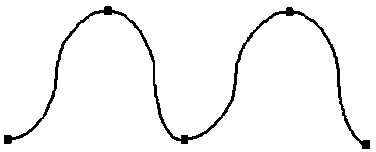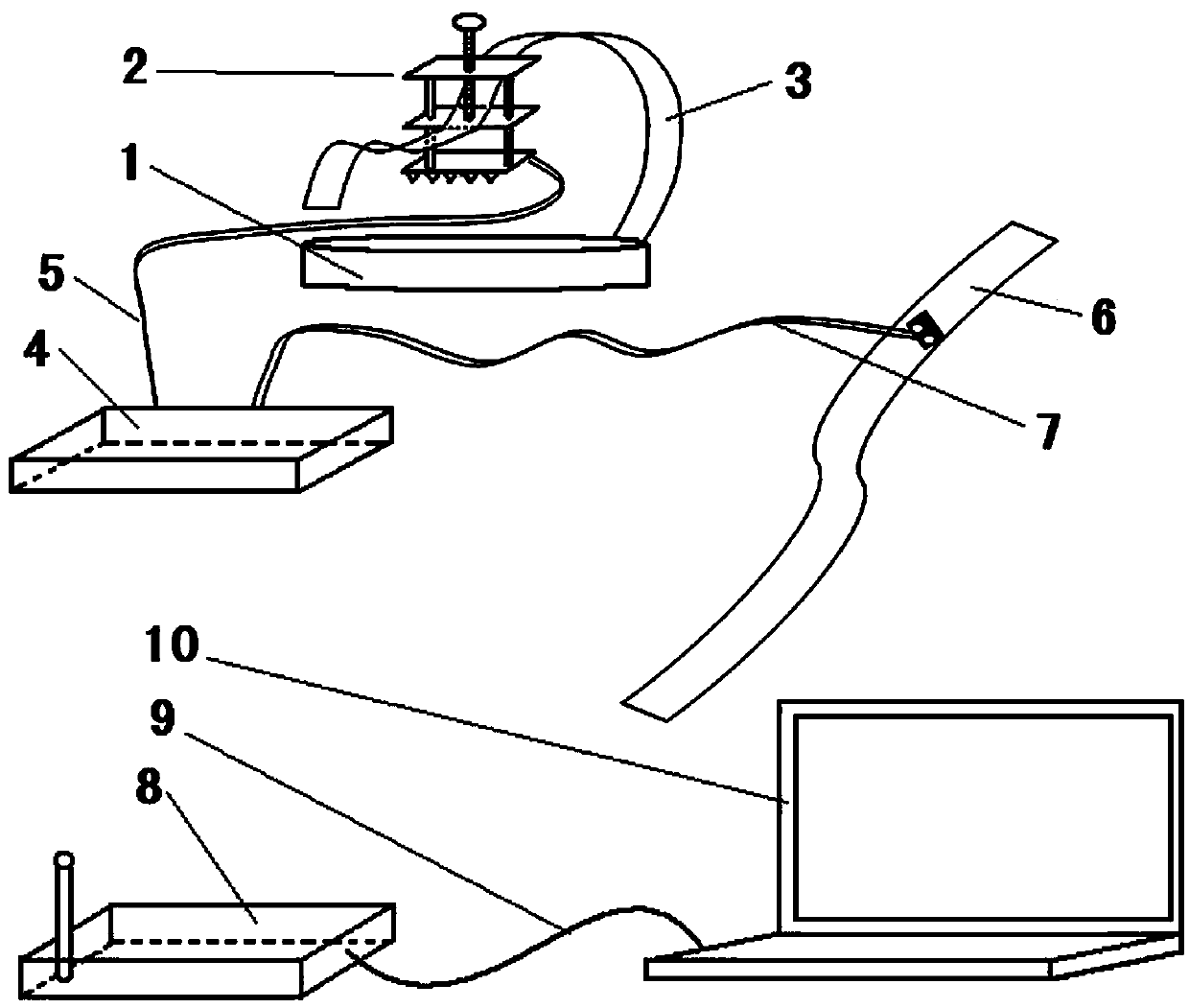Traditional Chinese medical science pulse-taking instrument
A pulse diagnosis instrument and the technology of traditional Chinese medicine, which are applied in the field of traditional Chinese medicine and medical equipment of traditional Chinese medicine, can solve the problems such as the requirements for sensor sensitivity that have not yet been seen, and achieve the effect of simple and reasonable structure, convenient operation and low manufacturing cost
- Summary
- Abstract
- Description
- Claims
- Application Information
AI Technical Summary
Problems solved by technology
Method used
Image
Examples
Embodiment 1
[0070] A traditional Chinese medicine pulse diagnosis instrument, its structure, connection and installation methods refer to the introduction of specific implementation modes. What is further explained here is: the size of the sensor vector 17 is 0.3mm×1.4mm, and the bottom surface of the outer packaging cylinder 15 is 3mm higher than the sensitive surface of the sensor (h 1 =3mm, see attached Figure 5 h in 1 ); the top surface 18 of the protective screen 16 is higher than the bottom surface of the outer packaging cylinder 15 by 3.90mm (h 2 =3.90mm, see attached Figure 5 h in 2 ), the proportional relationship between the size of the protective screen 16 and the sensor vector 17 is L1:L2:L3=1:0.9:0.8, the size of the top surface 18 and the bottom surface 20 of the protection screen 16 is: the diameter of the bottom surface 20 Φ=0.27mm, The diameter of the top end surface 18 is Φ=0.24mm. Use silica gel (elastic modulus E=2.14MPa, density ρ=1.19~1.35g / cm 3 ) is the mate...
Embodiment 2
[0072] The difference between embodiment 2 and embodiment 1 is that: 7 resistance strain gauge sensor vectors 17 are used, the size of the sensor is 0.3 mm × 1.4 mm, and the bottom surface of the outer packaging cylinder 15 is 2 mm higher than the sensitive surface of the sensor (h 1 =2mm, see attached Figure 5 h in 1 ); the top surface 18 of the protective screen 16 is higher than the bottom surface of the outer packaging cylinder 15 by 2.60mm (h 2 =2.60mm, see attached Figure 5 h in 2 ), the proportional relationship between the size of the protective screen 16 and the sensor vector 17 is L1:L2:L3=1:0.9:0.75, the size of the top surface 18 and the bottom surface 20 of the protection screen 16 is: the diameter of the bottom surface 20 Φ=0.27mm, The diameter of the top end surface 18 is Φ=0.23 mm.
Embodiment 3
[0074] The difference between embodiment 3 and embodiment 1 is that: 9 resistance strain gauge type sensor vectors 17 are used, the size of the sensor is 0.3 mm × 1.4 mm, and the bottom surface of the outer packaging cylinder 15 is 1 mm higher than the sensitive surface of the sensor (h 1 =1mm, see attached Figure 5 h in 1 ); the proportional relationship between the size of the protective screen 16 and the sensor vector 17 is L1:L2:L3=1:0.85:0.85, the size of the top surface 18 and the bottom surface 20 of the protection screen 16 is: the diameter of the bottom surface 20 Φ=0.26mm, The diameter of the top end surface 18 is Φ=0.26mm. Use butyl rubber (elastic modulus E=7.8MPa, density ρ=0.92g / cm 3 ) is the material of the protective screen 16 .
PUM
 Login to View More
Login to View More Abstract
Description
Claims
Application Information
 Login to View More
Login to View More - R&D
- Intellectual Property
- Life Sciences
- Materials
- Tech Scout
- Unparalleled Data Quality
- Higher Quality Content
- 60% Fewer Hallucinations
Browse by: Latest US Patents, China's latest patents, Technical Efficacy Thesaurus, Application Domain, Technology Topic, Popular Technical Reports.
© 2025 PatSnap. All rights reserved.Legal|Privacy policy|Modern Slavery Act Transparency Statement|Sitemap|About US| Contact US: help@patsnap.com



